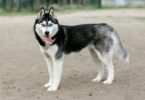What if the perfect family pet combined the intelligence of a Poodle with the charm of a Corgi? This question drives the growing popularity of designer dogs, and one hybrid stands out for its winning mix of traits. Meet the Corgipoo—a cross between the spirited Pembroke Welsh Corgi and the clever Miniature or Toy Poodle.
Known for their playful energy and affectionate nature, these small dogs thrive in homes where they receive plenty of attention. Their curly or wavy coats often inherit hypoallergenic qualities from their Poodle lineage, making them a potential match for allergy-prone owners. However, shedding can vary, so regular grooming remains essential.
This guide explores everything from daily care routines to health considerations. You’ll learn how their adaptable size—ranging from 10 to 30 pounds—suits both apartments and houses with yards. With lifespans reaching 12-18 years, proper nutrition and exercise play vital roles in their well-being.
Whether you’re a first-time pet parent or a seasoned dog enthusiast, discover why this breed excels at forming strong bonds with families. From training tips to cost insights ($400-$900), we’ll help you decide if this lively companion fits your lifestyle.
Understanding the Corgipoo: Origins & Parent Breeds
Designer dogs like the Corgipoo inherit more than just looks—they carry centuries of breed-specific instincts and skills. To grasp what makes this hybrid unique, we explore its lineage: the spirited Pembroke Welsh Corgi and the clever Miniature Poodle.
History of the Pembroke Welsh Corgi
Originating in 10th-century Wales, Pembroke Welsh Corgis were bred to herd cattle. Their low stature allowed them to nip at livestock heels while dodging kicks. These dogs later gained royal favor, particularly with Queen Elizabeth II, who adored their alertness and loyalty.
The Miniature Poodle Influence
Miniature Poodles trace their roots to Germany and France, where they retrieved waterfowl for hunters. Their tightly curled coats repelled water, while their intelligence made them quick learners. Today, they’re celebrated for hypoallergenic fur and problem-solving abilities.
Combining these parent breeds creates a mixed breed with remarkable adaptability. The Corgi’s herding drive blends with the Poodle’s eagerness to please, resulting in energetic yet trainable companions. However, traits like coat texture and energy levels can vary widely.
Understanding this genetic mix helps predict health risks and behavior patterns. While hybrid vigor often strengthens resilience, potential owners should research both lineages thoroughly. This knowledge ensures you’re prepared for your dog’s unique needs.
Distinctive Characteristics and Temperament
Blending sharp minds with endless enthusiasm, this hybrid brings together the best qualities of its parent breeds. Their alert expressions and wagging tails hint at a personality built for companionship and activity.
Intelligence and Playfulness
These dogs learn commands faster than most mixed breeds. Puzzle toys and obedience drills keep their active minds engaged. One study found they master new tricks 30% quicker than similar-sized hybrids.
Daily play sessions are non-negotiable. Fetch games and agility courses channel their high energy constructively. Families often report their pets initiating games of hide-and-seek with children.
Social interactions strengthen their friendly nature. They thrive in homes where kids participate in training or grooming routines. Early exposure to varied environments prevents shyness around strangers.
Mental stimulation prevents boredom-related mischief. Rotate interactive toys weekly and incorporate scent work during walks. Their eagerness to please makes positive reinforcement highly effective.
This breed’s balanced temperament explains its rising popularity. They adapt quickly to household rhythms while maintaining a playful spark that delights owners of all ages.
Physical Appearance and Size Overview
When choosing a designer dog, appearance often sparks immediate fascination. This hybrid’s look depends on which parent breed traits dominate—resulting in endless combinations of textures, colors, and proportions. Their compact build and expressive features make them stand out among small dog breeds.
Coat Types, Colors, and Patterns
These dogs may inherit the Corgi’s dense double coat or the Poodle’s tight curls. Some showcase wavy blends that require weekly brushing to prevent matting. Colors range from classic black, white, and cream to rare apricot or sable shades.
Patterns like merle, parti-color, or phantom markings add uniqueness. Their size typically stays between 10-15 inches tall and 10-30 pounds—ideal for apartment living. Stubby legs from the Corgi lineage pair with a balanced body shape influenced by both parent breeds.
Prospective owners should expect variability even within the same litter. One puppy might have a Poodle’s hypoallergenic curls, while another sports the Corgi’s water-resistant undercoat. Look for bright eyes, clean ears, and a wagging tail when evaluating a puppy’s health.
This breed’s charm lies in its unpredictability. No two look exactly alike, offering a one-of-a-kind companion that turns heads at dog parks and vet offices alike.
Health Considerations for Your Corgipoo
Owning a hybrid dog means balancing their playful energy with proactive health management. While mixed breeds often benefit from genetic diversity, inherited conditions from parent breeds still require attention. Early prevention and informed care lay the foundation for a thriving companion.
Common Health Risks and Preventative Screenings
This breed may inherit hip dysplasia from Corgis or eye issues like progressive retinal atrophy from Poodles. Dental disease also ranks high due to their compact jaw structure. Reputable breeders reduce these risks by screening parent dogs for orthopedic and ocular conditions.
Schedule bi-annual vet check-ups to catch problems early. X-rays for joint health and ophthalmologist evaluations help monitor inherited issues. Daily tooth brushing paired with dental chews prevents plaque buildup—a common concern in small breeds.
Responsible breeders provide documentation proving parent dogs passed health clearances. Ask for OFA (Orthopedic Foundation for Animals) certifications and genetic test results. These steps minimize the likelihood of passing on serious conditions to puppies.
Though hybrids often have fewer health issues than purebreds, vigilance remains key. Maintain a healthy weight through portion control and exercise to ease joint stress. Watch for signs of bloat—a sudden swollen abdomen requires immediate veterinary care.
Combining routine screenings with preventive measures gives your dog the best chance at a long, active life. Partner with your vet to create a tailored wellness plan addressing breed-specific risks.
Training Techniques and Mental Stimulation
Smart dogs thrive when their minds and bodies stay active. This hybrid’s sharp intellect demands creative approaches to prevent boredom and destructive behaviors. Structured routines combined with engaging challenges help channel their energy productively.
Reward-Based Learning Strategies
Positive reinforcement works best for these eager-to-please companions. Treats and praise after successful commands strengthen desired behaviors. One owner reported faster progress using kibble rewards during 10-minute daily sessions.
Consistency prevents confusion. Use clear verbal cues like “sit” and “down” paired with hand signals. Morning training sessions often yield better focus before distractions arise. Puzzle toys like the GameChanger® keep dogs occupied while reinforcing problem-solving skills.
Interactive games double as mental workouts. Hide treats under cups or play scent-based treasure hunts. Teaching tricks like spinning or fetching specific toys maintains engagement. These activities burn energy while strengthening owner-pet bonds.
Early puppy classes establish lifelong manners. Group settings improve socialization and response to distractions. Owners who start training before six months notice fewer behavioral issues during adolescence.
Rotate activities weekly to prevent monotony. Combine obedience drills with agility exercises for physical and mental challenges. This balanced approach helps intelligent dogs stay content and well-adjusted.
Exercise Needs and Energy Levels
Small stature doesn’t mean low energy for this lively hybrid. Despite their compact size, these dogs require 60-90 minutes of daily activity to stay healthy. Short walks around the neighborhood and indoor play sessions work well for apartment dwellers.
Morning and evening exercise routines help prevent boredom-related chewing or barking. Schedule 15-minute fetch sessions before breakfast and puzzle toy challenges after dinner. This balanced approach burns energy while strengthening your bond.
Consistent activity reduces joint stress and maintains lean muscle mass. Their short legs need low-impact exercises like swimming or slow-paced hikes. Always watch for overheating during summer months.
Adapt workouts to your living space. Stair climbs substitute for hill runs in flats. Rotate toys weekly to keep indoor games exciting. Mental stimulation through scent trails or obedience drills counts as exercise too.
Regular movement prevents weight gain and destructive habits. Pair physical tasks with training moments – practice “sit-stays” during walk breaks. This dual focus keeps both body and mind engaged throughout the day.
Grooming Essentials: Coat Care and Maintenance
Maintaining a healthy coat goes beyond aesthetics—it’s a cornerstone of your dog’s well-being. Whether your companion inherits the Poodle’s curls or the Corgi’s dense fur, tailored grooming prevents skin issues and enhances comfort. Regular care also lets you spot early signs of parasites or infections.
Brushing Routines and Grooming Frequency
Brushing frequency depends on coat type. Wavy or curly coats need daily attention with a slicker brush to prevent mats. Short-haired varieties benefit from weekly sessions using a bristle brush to remove loose hair. Always brush in the direction of hair growth to avoid irritation.
Check ears weekly for wax buildup or redness. Use a vet-approved cleanser and cotton balls—never cotton swabs—to gently wipe the outer ear. Moisture-prone breeds may need more frequent cleaning after baths or swims.
Start grooming sessions early with puppies to build positive associations. Use treats and soft brushes during brief daily interactions. Gradually introduce nail trims and tooth brushing as they grow comfortable.
Professional groomers help manage high-maintenance coats every 6-8 weeks. They can trim hair around eyes and paws for better hygiene. Consistent home care between visits keeps shedding under control and maintains that “fresh from the salon” look.
Turn grooming into bonding time by pairing it with praise and gentle massage. Many dogs learn to enjoy the routine, especially when followed by play or walks. This daily ritual strengthens trust while keeping your pet looking their best.
Nutrition, Feeding Tips, and Weight Management
Fueling an energetic companion requires smart nutritional choices tailored to their unique needs. Active small breeds need calorie-dense meals packed with premium proteins and essential nutrients. Portion control becomes critical—overfeeding by just 10% can lead to weight gain in compact frames.
Balancing Energy Needs
Choose foods with real chicken, beef, or fish as the first ingredient. These animal proteins support muscle maintenance during play and training. Look for added glucosamine to protect joints during high-energy games—a common concern from parent breeds.
Measure meals using a kitchen scale instead of cups for accuracy. Adults typically need ½ to 1 cup daily split into two feedings. Adjust portions based on activity levels—outdoor adventures may require 15% more calories, while rest days need reductions.
Transition diets gradually when switching from puppy to adult formulas. Mix new food with old over 10 days to avoid stomach upset. Senior dogs often benefit from lower-calorie options with joint supplements.
Owners should avoid table scraps and high-fat treats. Instead, use pieces of their kibble during training sessions. Weekly weigh-ins help catch weight changes early—ribs should be felt but not seen.
Consult your vet about raw diets or grain-free options if allergies arise. They can recommend brands meeting AAFCO standards while addressing specific health needs. Personalized plans ensure your companion thrives through every life stage.
Living Arrangements: Apartment and Home Considerations
Finding the right home environment for your energetic companion requires understanding their spatial needs and social habits. This adaptable hybrid thrives in apartments and houses when owners meet their exercise requirements. Their compact size—12-40 pounds and 10-15 inches tall—makes them versatile for urban or suburban settings.
Socialization with Other Pets and Neighbors
Apartment dwellers should prioritize noise management. Early training reduces excessive barking, a trait inherited from Corgi parents. Use puzzle feeders during quiet hours to maintain peace with neighbors.
Suburban homes offer more space but still need structured routines. Schedule two daily walks and backyard play sessions. Socialization starts in puppy years—introduce them to various pets and people weekly.
Indoor activities compensate for limited outdoor access. Try hide-and-seek games with treats or obstacle courses using furniture. These exercises satisfy their Poodle parents’ love for mental challenges.
Consistent routines benefit both pet and owner. Feed and walk at fixed times to create predictability. This stability helps the breed adapt during senior years or when moving homes.
Responsible owners focus on positive interactions. Reward calm behavior around new animals and children. Over time, this builds a harmonious household where everyone coexists comfortably.
With proper guidance from puppyhood through adult years, these dogs flourish in any setting. Their dual heritage from working parent breeds ensures they remain engaged companions for years to come.
Corgipoo and Family Dynamics: Kid-Friendly and Companion Traits
A dog’s ability to integrate into family life hinges on its temperament and adaptability. Combining the affectionate nature of the Welsh Corgi with the Poodle’s intelligence, this hybrid excels as a gentle playmate for children. Their patience and moderate energy levels make them ideal for homes with kids aged 5+.
Building a Strong Bond with Your Furry Friend
Start by involving children in daily care routines. Simple tasks like filling food bowls or brushing the coat teach responsibility while fostering trust. These dogs thrive when included in family activities—even meal prep becomes bonding time if they “supervise” from a designated spot.
Interactive games leverage their Welsh Corgi heritage. Try treasure hunts where kids hide treats under cups, encouraging problem-solving. Evening walks paired with “find the stick” challenges engage both body and mind. Reward calm behavior with cuddle sessions to reinforce positive associations.
Consistency strengthens relationships. Establish fixed playtimes and quiet hours using visual schedules for younger children. This structure helps the dog anticipate interactions while teaching kids about boundaries. Families report stronger bonds when everyone uses the same commands during training.
Their adaptable nature makes them a good idea for busy households. Short training sessions during homework time or weekend adventures keep them mentally stimulated. Remember—positive reinforcement works best when the whole family participates.
By blending the Welsh Corgi’s loyalty with playful energy, these companions become irreplaceable family members. Regular grooming sessions or lazy movie nights deepen connections, proving that love grows through shared moments.
Corgipoo: Finding Reputable Breeders and Adoption Options
Finding a healthy companion starts with knowing which questions to ask breeders or rescues. Responsible sources prioritize genetic health testing, including screenings for hip dysplasia and eye conditions. Always request documentation from organizations like the Orthopedic Foundation for Animals (OFA) to verify clearances.
Reputable breeders openly share parent dogs’ medical histories and encourage facility visits. Look for those who discuss the health level of previous litters and provide testimonials from past clients. Adoption centers may offer mixed breeds at lower costs while still conducting essential vet checks.
Ask about exercise routines and diet plans to gauge commitment to puppy wellness. Breeders should explain how they maintain optimal health levels through proper socialization and preventive care. Avoid sellers who avoid questions or lack proof of genetic testing.
Whether adopting or purchasing, prioritize transparency in health levels and breeding practices. Certified rescues and ethical breeders invest in long-term pet wellness, giving your new friend the best start.
Wrapping Up Your Corgipoo Journey
Choosing the right pet involves balancing energy, care needs, and lifestyle fit. This spirited hybrid—born from the Welsh Corgi’s loyalty and the Poodle’s intelligence—offers families a lively companion adaptable to apartments or suburban homes. Their hypoallergenic coats and manageable size make them a practical choice for diverse households.
From grooming routines to mental enrichment strategies, this guide highlights essential care practices. Regular exercise prevents boredom, while preventive vet visits address breed-specific health risks. Their playful nature thrives with structured training and interactive games.
Mixed breeds like this one often excel in forming strong bonds with children and adults alike. Prioritize reputable sources when adopting, ensuring genetic screenings and transparent health histories. Continued research and engagement with breed communities help maintain your pet’s well-being.
Whether drawn to their expressive eyes or trainable personality, this breed proves why designer dogs remain popular. Take the next step by connecting with certified breeders or rescue networks. With thoughtful preparation, you’ll gain a devoted friend ready to brighten every day.
FAQ
What breeds make up a Corgipoo?
This designer mix combines the Pembroke Welsh Corgi and Miniature Poodle. The hybrid inherits traits like intelligence from the Poodle and herding instincts from the Corgi.
Are these dogs prone to specific health issues?
They may inherit risks like hip dysplasia or eye conditions from parent breeds. Regular vet checkups and screenings help manage these concerns early.
How much exercise do they need daily?
Aim for 45–60 minutes of activity split into walks, playtime, and mental stimulation. Their energy levels reflect both parent breeds’ working backgrounds.
Do they shed a lot?
Coat types vary, but most have low-to-moderate shedding. Weekly brushing minimizes loose hair, while curly coats may need professional grooming every 6–8 weeks.










Leave a Comment